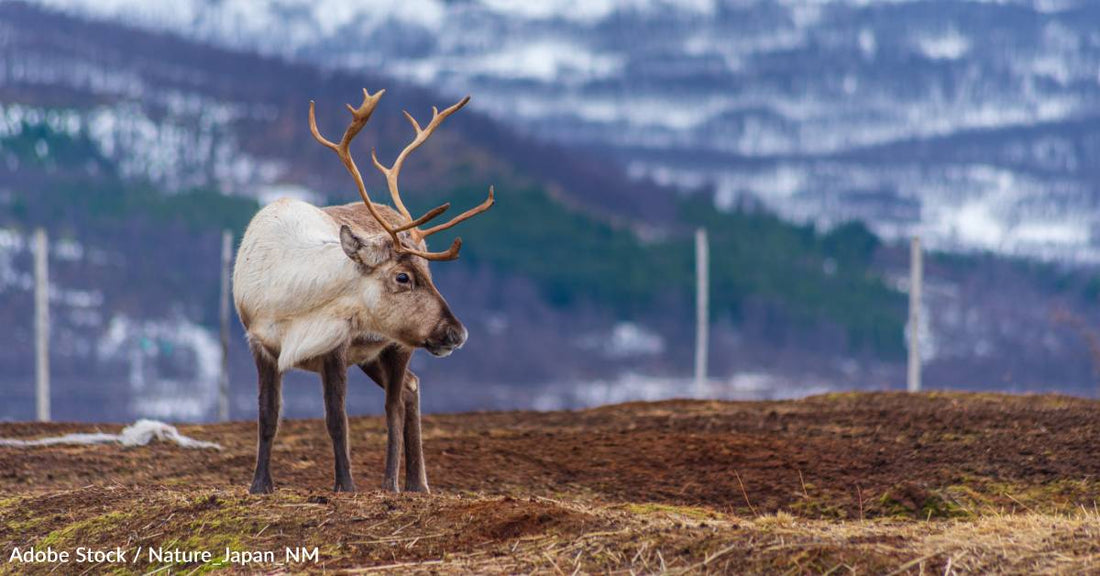7th Annual Holiday Toy & Book Event Help make the holidays brighter this year!
Reindeer's 'Extraordinary Visual System' Includes Seasonal Eye Color Change, Ability to See UV Light
Michelle Milliken
As Christmas approaches, reindeer may be on our radar more than usual, whether we’re chatting with kids who still believe in Santa, we’re watching our favorite holiday movies featuring reindeer, or we find ourselves wanting to learn more about the real-life animals. If you happen to belong to that last group, a new study may pique your interest.
During the wintertime, reindeer may not have as much access to food, so they mostly eat a specific type of lichen, called reindeer moss. They get to it by digging into the snow. Another interesting thing that happens this time of year is that their eyes take on a transformation unique to this species, compared with other daytime mammals anyway. Their eyes turn from a golden color to a bright blue, which is thought to help them see better as the daylight wanes substantially in the colder months. A study published in the journal i-Perception looked deeper into the reindeer’s winter eyes and how they link to their winter diet.
Nathaniel Dominy, a Dartmouth professor who led the “Reindeer and the quest for Scottish enlichtenment” study, says, “Reindeer are so cool, but many people think about them only at Christmas. Now is a good time to alert people to their extraordinary visual system.”
Among the extraordinary facets of their visual system is that it transmits up to 60% of ultra-violet light, which might seem strange for a day-active animal. However, as the team investigated the lichen eaten by reindeer in the Scottish Highlands, they learned a bit more about why.
Among the more than 1500 species of lichen in the Highlands, the team discovered different levels of UV reflection and absorption. The ones that reindeer eat are stronger absorbers. This means to reindeer eyes, they stand out as darker patches within the reflective snowy landscape.
The findings show how their unique visual system may help them survive the winter.
Dominy says, “If you can put yourself in their hooves looking at this white landscape, you would want a direct route to your food. Reindeer don’t want to waste energy wandering around searching for food in a cold, barren environment. If they can see lichens from a distance, that gives them a big advantage, letting them conserve precious calories at a time when food is scarce.”
In their paper, the authors also add, “Taken together, our limited study of lichens suggests chromatic conspicuousness to reindeer eyes under twilight conditions. They also cast new light on the benefits of a luminescent nose––it may light the way for Santa to see by, but it is Rudolph's blue-eyes that allow him to find dinner after a long Christmas season.”
You can read the whole study here.




